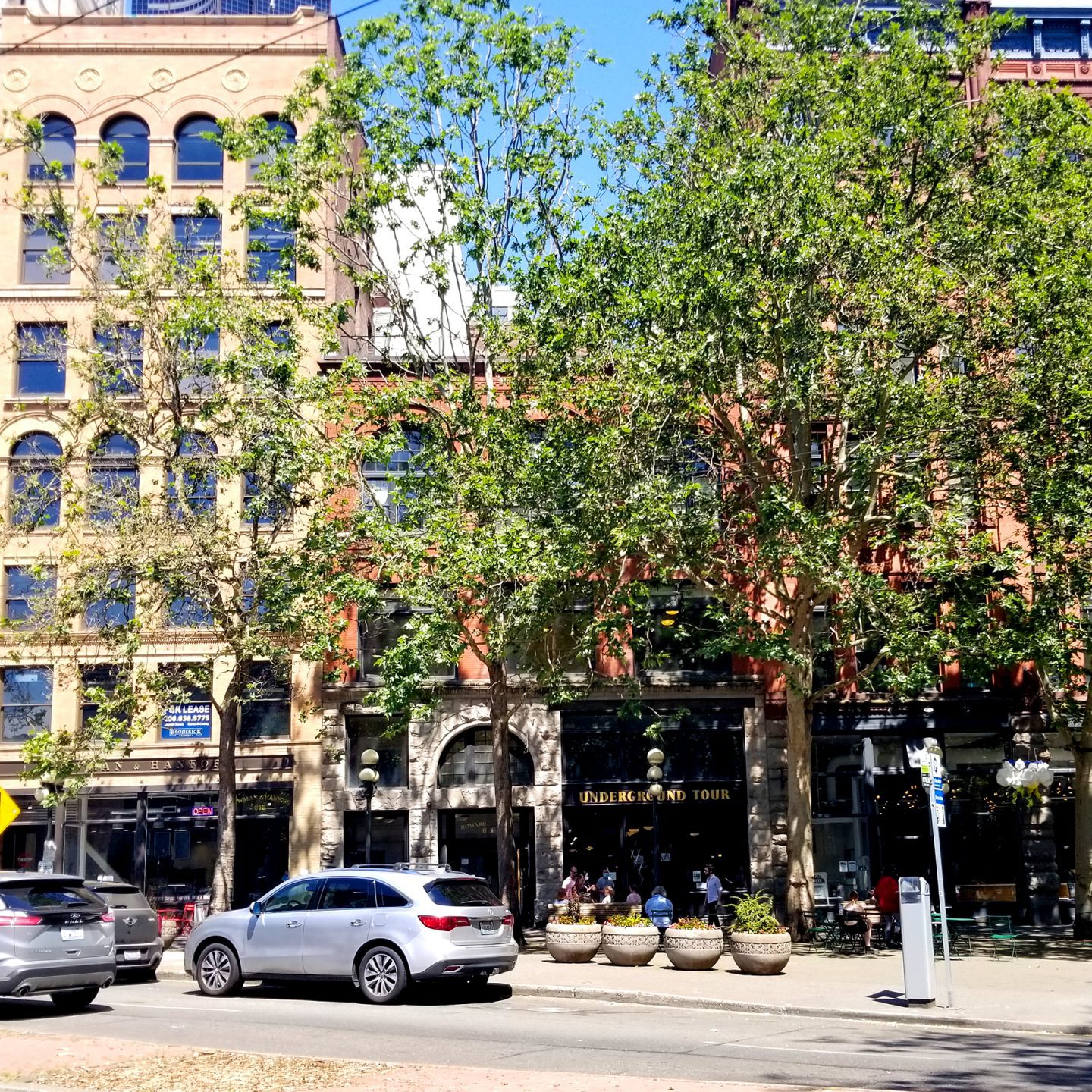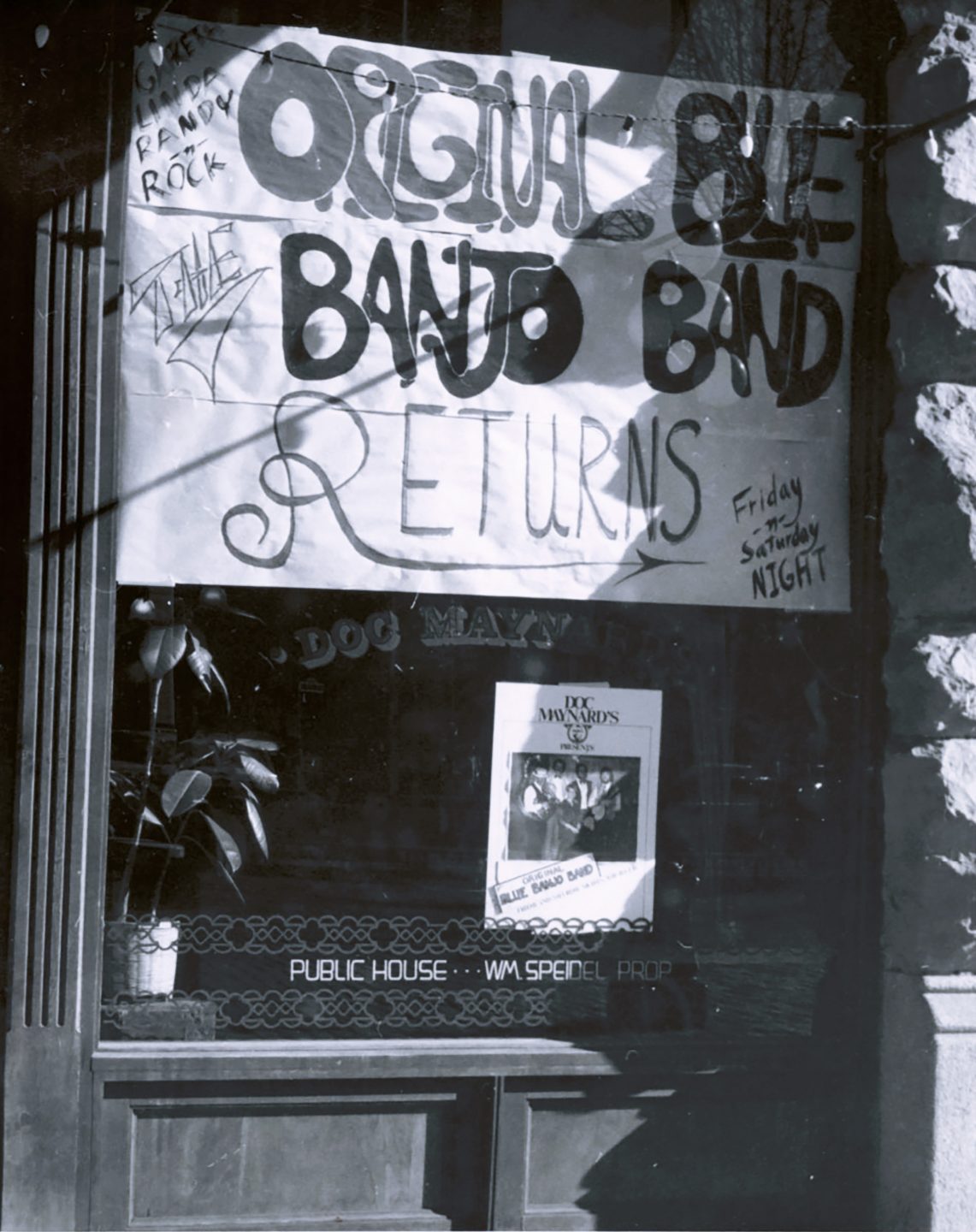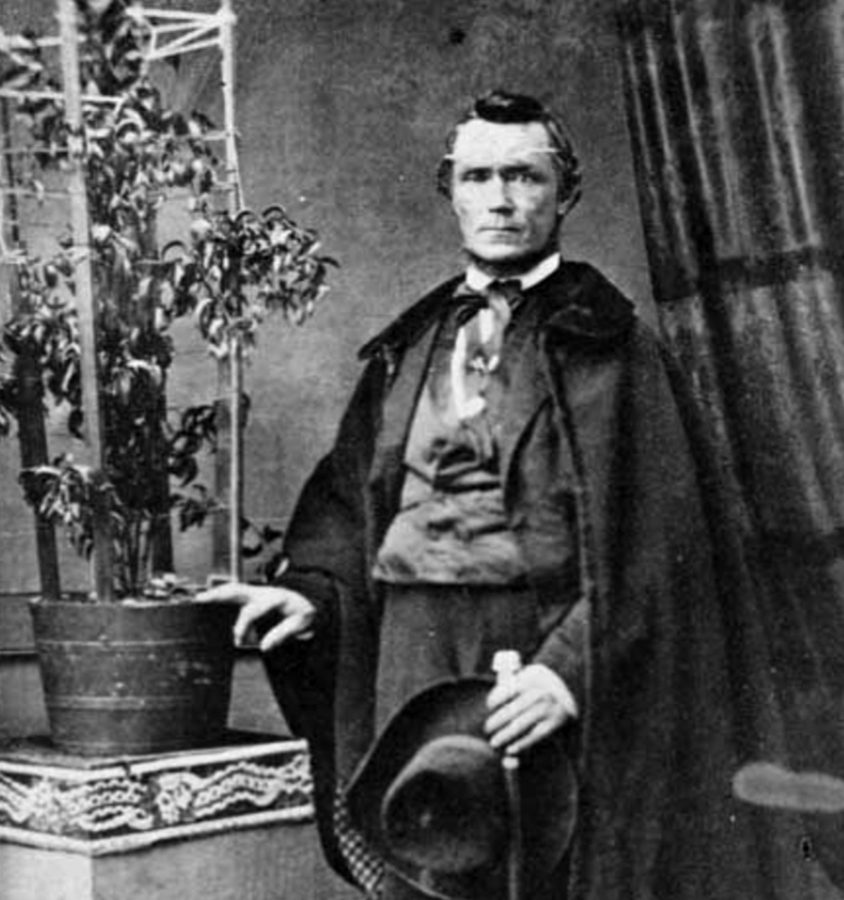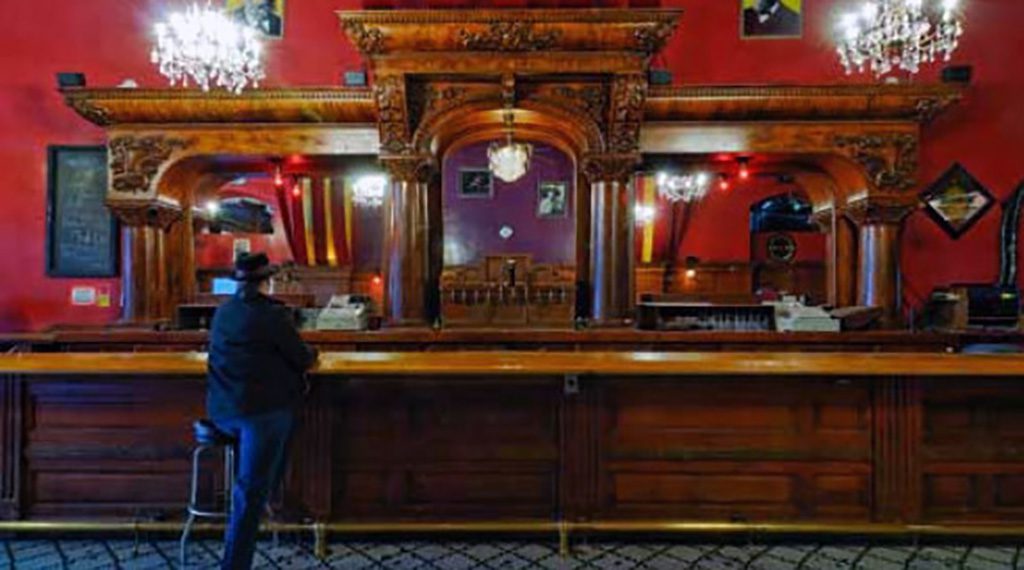-
Doc Maynard’s
614 1st Avenue
The 1890s Gold Rush transformed Seattle – billed then as the “Gateway to Alaska.” Based in this Howard Building storefront in 1896, Seattle’s “Prophetess,” Miss Florance Marvin, a psychic reader who had reportedly been offering her prediction services for hire for a dozen years — and who repeatedly advertised that she’d predicted the Great Seattle Fire of 1889 — now bragged that she “has also located valuable mines in Alaska” although she could “be consulted on all subjects.”
In the 1890s the Boyd & Brass photography studio was based here, followed in 1897 by the London Investment Company offering to sell shares in the Klondyke Navigation, Trading & Transportation Co. By 1910, Carr’s billiards and pool hall – “Strictly a Resort for Gentlemen” – was situated here. By 1912, George Butler was running his namesake Butler’s Café and Saloon, replete with an ornate wooden bar that boasted a gold-and-silver-plated “lucky horseshoe” embedded in its countertop.
Decades went by, and the whole Skid Road neighborhood deteriorated further, until preparations began for the Seattle World’s Fair in 1962. That’s when a number of old storefronts were converted into new restaurants and nightclubs aimed at the expected hordes of tourists. Among those was Louie’s, which opened in 1960 and was revamped in ’62 as Louie’s Old Chicago. It featured a Roaring ’20s theme with patrons dancing the Charleston and Lindy Hop to the sounds of Skinny Malone and his Hot Bananas, or The Saints. Soon after the fair’s end, the spot was revamped as the Shaggy Dog, which opened in 1963 with entertainment provided by the six-member American Operatic Quartet. After that, the focus turned to folk music, offering regular weekly Hootenanny nights with singers and strummers including Paul Gillingham, Judy Flenniken, and Billy “Hey Joe” Roberts.
Around 1966 the shop became an art gallery called The Gallery. It was here that a new psychedelic rock band, Crome Syrcus, got its start. In 1965 local publicist Bill Speidel launched his Seattle Underground Tour business in Pioneer Square, and by 1975 was based out of his new Doc Maynard’s Public House (originally at 610 1st Avenue). The saloon was named in honor of David “Doc” Maynard, one of the original settlers in the 1850s village of Seattle, who was known as a cheerful tippler amidst an otherwise fairly teetotaling populace. The saloon opened with ragtime music by Doc Maynard’s Magnificent Front Street Band, but over the decades scads of bands performed here.




